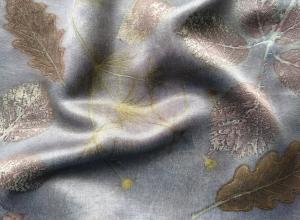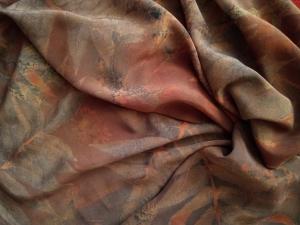Earlier in July, we shared Part 1 of our crafty editors series – here are some more delicate, striking and tasty examples of what our members do with their spare time!
Jenny Papworth
 This is a set of four prints on the theme of ‘winter’. I started screen-printing after a course at the local arts college, and I now print on paper and textiles and sell through my shop on Etsy. Doing something crafty is a great way to wind down after a long day in front of the computer, and screen-printing offers a whole new arena in which to be precise and pedantic.
This is a set of four prints on the theme of ‘winter’. I started screen-printing after a course at the local arts college, and I now print on paper and textiles and sell through my shop on Etsy. Doing something crafty is a great way to wind down after a long day in front of the computer, and screen-printing offers a whole new arena in which to be precise and pedantic.
John Ingamells
 Lockdown inspired many people to try baking sourdough bread. But the method’s popularity has been on the rise (!) for some years. Of course, sourdough is nothing new; it is the way bread was made for thousands of years before we learned how to make yeast separately.
Lockdown inspired many people to try baking sourdough bread. But the method’s popularity has been on the rise (!) for some years. Of course, sourdough is nothing new; it is the way bread was made for thousands of years before we learned how to make yeast separately.
Its devotees are captivated by the strange alchemy: the bread-and-water starter that lives in the fridge for years; the process that turns three simple ingredients – flour, water and salt – into well risen bread with a depth and complexity of flavour that mass-produced breads cannot match. And, to add a genuinely modern twist, they now tell us it’s actually very good for us as well!
Sam Hartburn
Here are some modular origami dodecahedra I made – the first is a normal dodecahedron made from post-it notes; the second is a stellated dodecahedron. I’m not sure if the third has a name – a flowered, cubed dodecahedron maybe.
 In modular origami, you fold a number of identical modules from small pieces of paper, then fit them together into a bigger shape. The modules usually slot together and stay in place without any glue, although often there is no strength to the piece until the final module is slotted into place – meaning that the process of putting them together can be frustrating. You can even make origami pieces that move, like this rotating structure.
In modular origami, you fold a number of identical modules from small pieces of paper, then fit them together into a bigger shape. The modules usually slot together and stay in place without any glue, although often there is no strength to the piece until the final module is slotted into place – meaning that the process of putting them together can be frustrating. You can even make origami pieces that move, like this rotating structure.
Rich Cutler
A few years ago I became interested in art and photography. Like most budding photographers I started out by taking decorative, pleasing images. However, I soon became dissatisfied with these, and found myself drawn instead to contemporary art – about which I knew very little (my background is in science). On a whim I applied for a master’s degree in photography, and to my surprise I was accepted! Doing the MA was one of the best decisions I’ve made, and improved my photography immeasurably. Since graduating in 2013 I’ve exhibited as a photographic artist both in the UK and internationally.
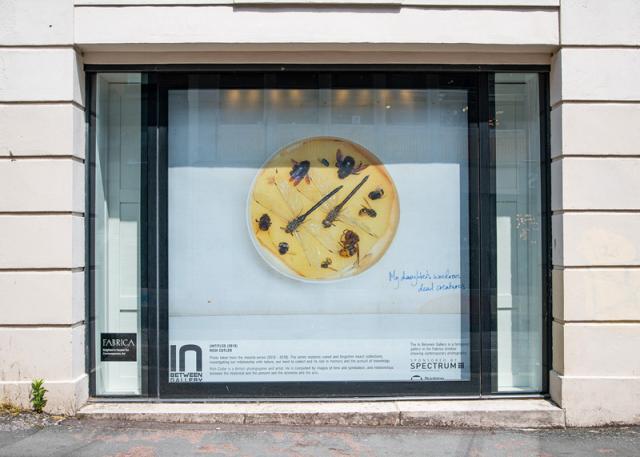
Rich has managed to show his work publicly despite the lockdown: Insecta in the window of the contemporary art gallery Fabrica, Brighton (on display until September).
Annette Doutney
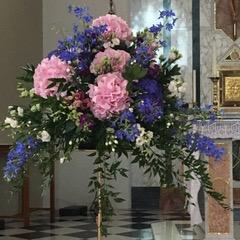 I arrange flowers at my parish church and it’s something I have missed during lockdown. It’s both relaxing and satisfying to take beautiful things and create something even more beautiful with them in a peaceful, empty church. I can let my mind wander as I work, too, unlike when I am editing or proofreading!
I arrange flowers at my parish church and it’s something I have missed during lockdown. It’s both relaxing and satisfying to take beautiful things and create something even more beautiful with them in a peaceful, empty church. I can let my mind wander as I work, too, unlike when I am editing or proofreading!
Philippa Tomlinson
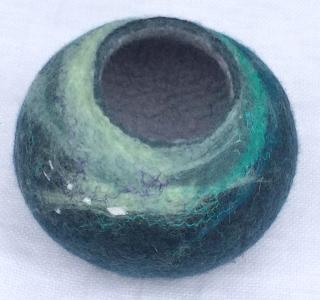 Wet felting is surprisingly hard physical work when done by hand, but this is partly why I love it. It is also a sensory activity – so a welcome antidote to the sometimes stressful hours spent staring at the computer screen. I can let my mind drift off, immersed in the colours and smells and textures of the felting while listening to music or the sounds of nature outside in the garden. It is also an unpredictable craft – you are never quite in control of how the final product will turn out – and it’s good to learn to embrace that.
Wet felting is surprisingly hard physical work when done by hand, but this is partly why I love it. It is also a sensory activity – so a welcome antidote to the sometimes stressful hours spent staring at the computer screen. I can let my mind drift off, immersed in the colours and smells and textures of the felting while listening to music or the sounds of nature outside in the garden. It is also an unpredictable craft – you are never quite in control of how the final product will turn out – and it’s good to learn to embrace that.
Proofread by Joanne Heath, Professional Member.
 Stitched together and posted by Abi Saffrey, CIEP blog coordinator.
Stitched together and posted by Abi Saffrey, CIEP blog coordinator.
The views expressed here do not necessarily reflect those of the CIEP.




